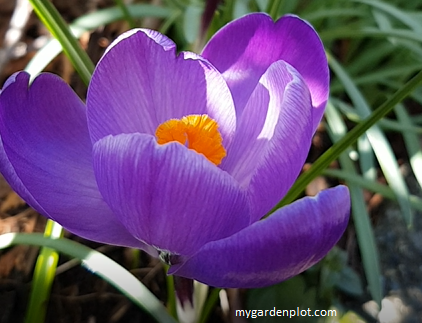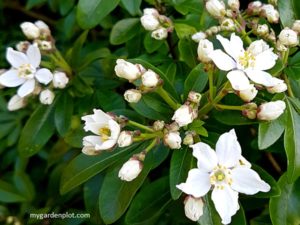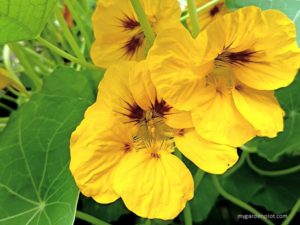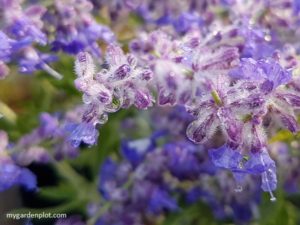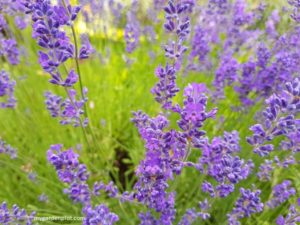About Crocus: Winter, Spring And Autumn Flowering Crocuses
Crocus is a perennial flowering bulb – the term bulb is loosely used with crocuses as they are technically a cormous plant, which means that it grows from a corm but has many similarities to bulbs and tubers. And they are just as easy to grow as Nerine bowdenii and tulip bulbs. Crocuses are divided between two types; winter and spring flowering crocus, and autumn (fall) flowering crocuses. This means that with some planning, you could spread the crocus flowering season from autumn through to spring. They are native to Europe spanning through to North Africa and Central Asia. The hardy varieties can sustain winters to -20C (-4F). They are dependable and reliably bloom year after year with little maintenance – that’s not to say you don’t add more crocuses every year to your existing garden collection. Following are tips on where and how to plant crocus bulb-like corms, and how to grow and care for crocuses in dormancy and after flowering.
Growing Crocus Flowers For Winter, Spring And Autumn Colour
The crocus flower is delightful, and seeing a mass of them growing together is the best way to enjoy these flowers. In spring especially, the anticipation of new growth after a dull winter energizes most gardeners. Crocuses are one of the earliest to bloom in a garden bringing a range of cheerful colours from blues and purples to yellows and creams. Though not as commonly seen as the spring-flowering types, fall crocuses are just as delightful in the autumn. Crocus thrive in sunny locations and respond by opening and closing to sunlight. They have narrow grass-like leaves which emerge with the flower – however, with the autumn-flowering crocus, the foliage emerges after the flower. To enjoy crocuses in your garden, here are steps for when to plant them to ensure you have these little gems cropping up in your autumn and spring garden – or as a delightful splash of winter colour in a lawn!
The Crocus And Saffron Spice
There are about 70 species of the crocus plant, but there is one, in particular, that is highly valued from a culinary perspective. The Crocus sativus, also known as saffron crocus, is an autumn flowering species that is the source of the world’s most expensive spice, saffron. The dark orange and red stigma and styles from the purple Crocus sativus flower have been cultivated for centuries and used extensively in Spanish and Indian dishes. It is harvested by hand in the autumn and dried. The production of saffron from the Crocus sativus is closely managed in Spain for premium culinary quality. Saffron is also used as a dye, and historically it was also used as a medicinal plant in Europe, particularly in ancient Greece and Rome.
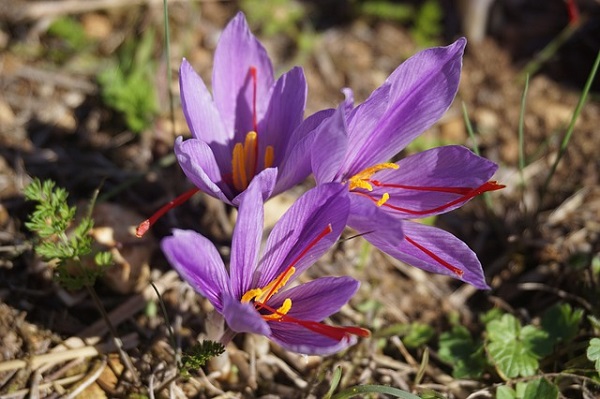
RELATED TOPIC: Other early blooming plants for the garden include hellebores (Lenten Rose) and snowdrops.
Crocus At A Glance
Type: Perennial Corm (Bulbs)
Location: Full Sun / Part Shade
Blooming Seasons: Winter / Spring / Autumn
Sizes: varies up to 18 cm (7 inches); most varieties around 8-10 cm (3.25 – 4 inches)
Plant Hardiness Zones: 3, 4, 5, 6, 7, 8, 9
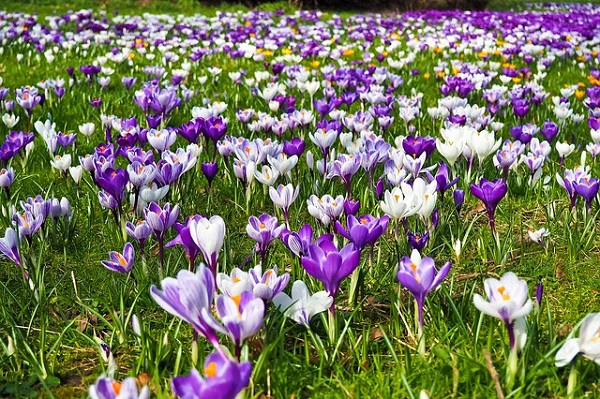
When And How To Plant Crocus Bulb-like Corms
Crocus is usually bought and planted in their dormant state. These crocus corms need to be planted in average, well-drained soil – though some prefer gritty or sandy soil and are perfectly suited for rock gardens. For the most part, crocuses are adaptable to different soil conditions so long as it is not waterlogged. They thrive being planted in a sunny location but can tolerate a part sunny site.
Most crocus corms can be planted about 7-12 cm (3-5 inches) deep. The rule of thumb is to dig the hole about three times the size of a bulb and this applies to crocuses too. For best visual effect, plant crocuses in a group and about 5-8 cm (2-3 inches) apart. One crocus corm can produce up to five flowers.
Crocuses also look delightful growing in a planter.
When To Plant Winter and Spring Flowering Crocus: Crocus flowers that appear in late winter and spring should be planted in autumn.
When To Plant Autumn Flowering Crocus: The autumn crocus flower that emerges during the fall season needs to be planted in late summer.
RELATED TOPIC: How To Plant And Position Flowering Bulbs
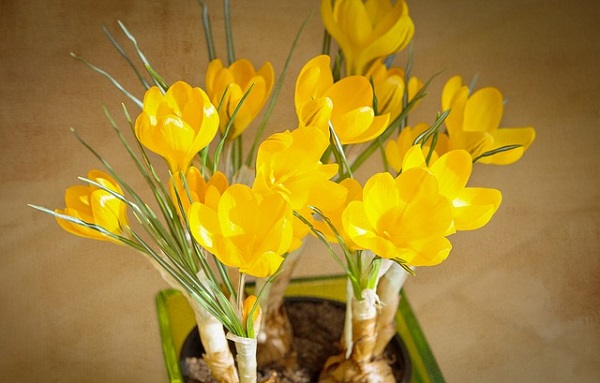
How To Grow And Care For Crocus
Crocus is easy to care for and, when planted appropriately, can survive with light feeding provided through rich organic topsoil. They need regular watering, but when dormant, care must be taken that the corms do not rot from excessive watering or rainfall. Good drainage is very important for the health of the crocus corm.
When flowers have faded, allow the green foliage to die back naturally. This process feeds energy back into the corm for the next flowering season. Once it has died back and thoroughly turned yellow or brown, then the old foliage can be removed.
If you have planted winter and spring flowering crocus in the lawn, keep in mind that you will need to wait for the foliage to die back before cutting the grass.
RELATED TOPIC: Learn more about lawn care and maintenance.
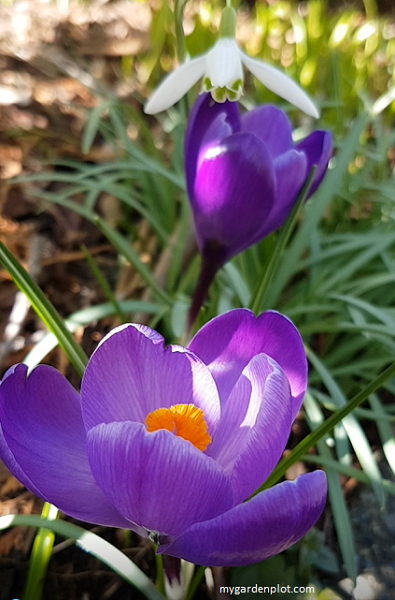
Pests And Diseases That Affect Crocus
Though generally trouble-free from disease, the crocus can sometimes be favoured by mice or squirrels. If this becomes an ongoing problem, place a piece of wired mesh above the corms but below the soil level to prevent the critter from digging up your crocus. Deer may ignore crocus, but if hungry, will take a nibble.

